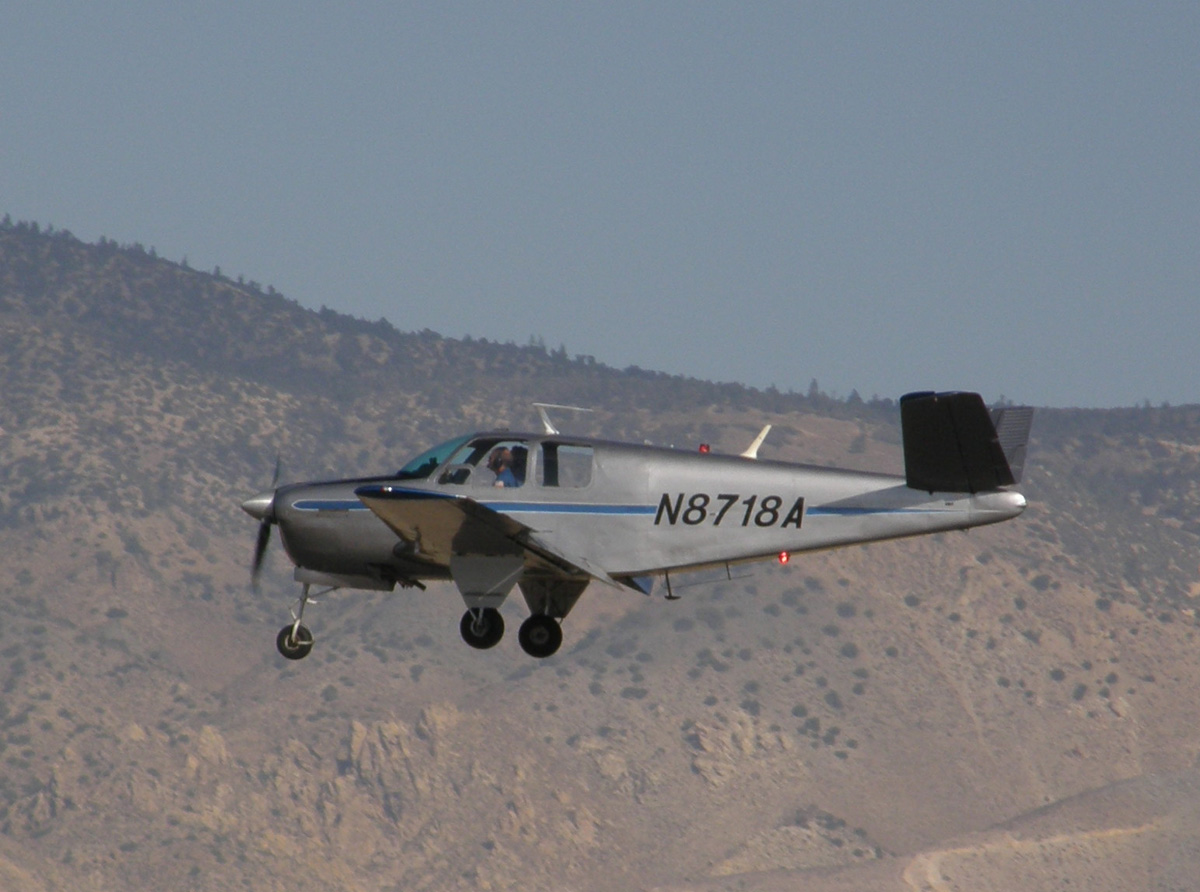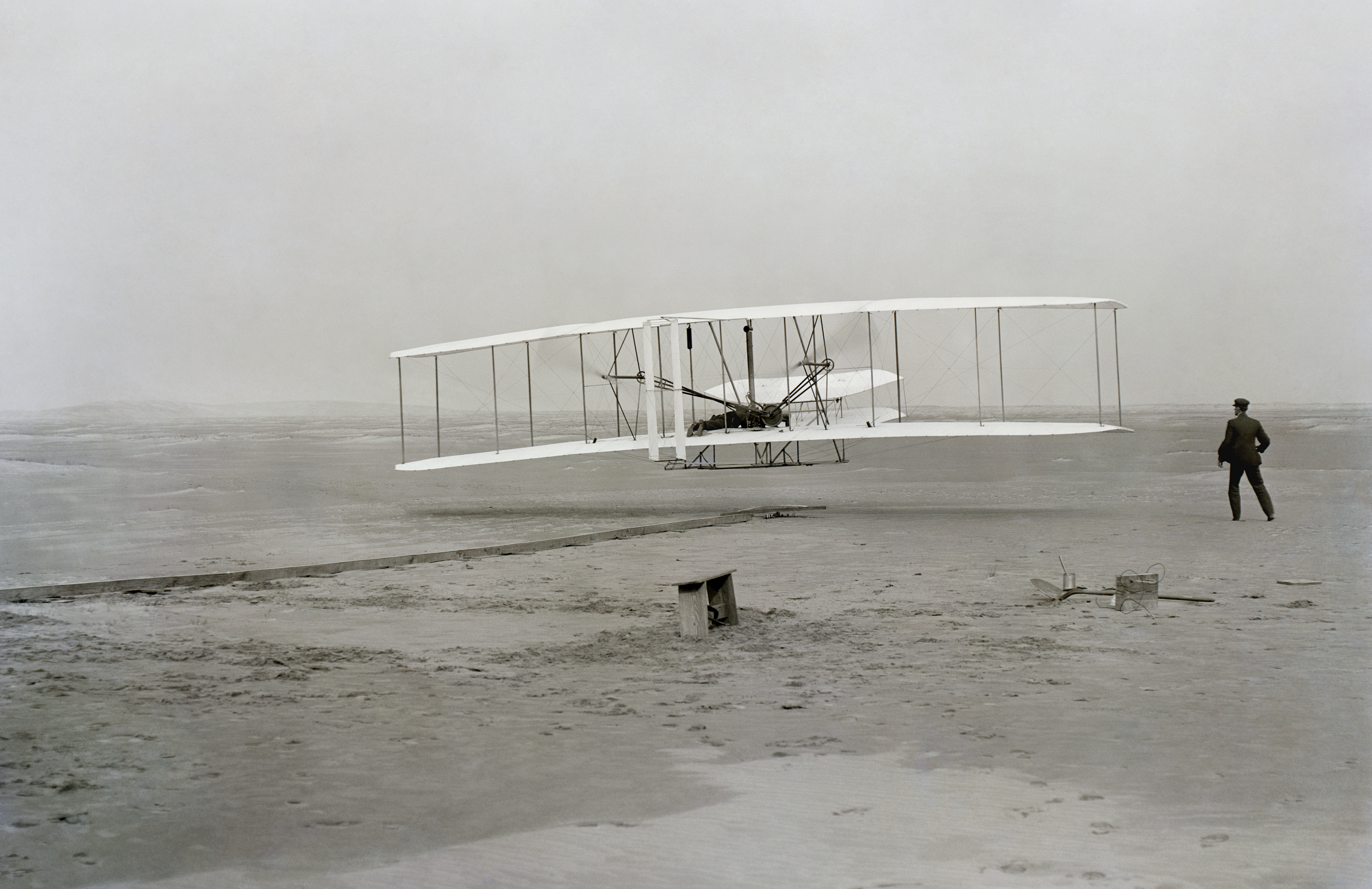|
V-tail Aircraft
The V-tail or ''vee-tail'' (sometimes called a butterfly tail or Rudlicki's V-tailGudmundsson S. (2013). "General Aviation Aircraft Design: Applied Methods and Procedures" (Reprint). Butterworth-Heinemann. p. 489. , 9780123973290) of an aircraft is an unconventional arrangement of the tail control surfaces that replaces the traditional vertical and horizontal surfaces with two surfaces set in a V-shaped configuration. It is not widely used in aircraft design. The aft edge of each twin surface is a hinged control surface called a ruddervator, which combines the functions of both a Rudder#Aircraft rudders, rudder and Elevator (aeronautics), elevator. History The V-tail was invented in 1930 by Polish engineer Jerzy Rudlicki and was tested for the first time on a Hanriot HD.28 trainer, modified by Poland, Polish aerospace manufacturer Plage i Laśkiewicz, Plage and Laśkiewicz in the summer of 1931. Variants The X-shaped tail surfaces of the experimental Lockheed XFV were essential ... [...More Info...] [...Related Items...] OR: [Wikipedia] [Google] [Baidu] |
Cruciform Tail
The cruciform tail is an aircraft empennage configuration which, when viewed from the aircraft's front or rear, looks much like a cross. The usual arrangement is to have the tailplane, horizontal stabilizer intersect the vertical tail somewhere near the middle, and above the top of the fuselage. The design is often used to locate the horizontal stabilizer away from jet exhaust, propeller and wing wake, as well as to provide undisturbed airflow to the rudder. Prominent examples of aircraft with cruciform tails include the Avro Canada CF-100 Canuck, the British Aerospace Jetstream 31, the MiG-15, the Fairchild Swearingen Metroliner, and the Rockwell B-1 Lancer. See also * Pelikan tail * T-tail * Twin tail * V-tail References {{Aircraft components Cruciform tail aircraft, ... [...More Info...] [...Related Items...] OR: [Wikipedia] [Google] [Baidu] |
Parasitic Drag
Parasitic drag, also known as profile drag, is a type of aerodynamic drag that acts on any object when the object is moving through a fluid. Parasitic drag is defined as the combination of '' form drag'' and '' skin friction drag''. It is named as such because it is not useful, in contrast with lift-induced drag which is created when an airfoil generates lift. All objects experience parasitic drag, regardless of whether they generate lift. Parasitic drag comprises all types of drag except lift-induced drag, and the total drag on an aircraft or other object which generates lift is the sum of parasitic drag and lift-induced drag. Form drag Form drag arises because of the shape of the object. The general size and shape of the body are the most important factors in form drag; bodies with a larger presented cross-section will have a higher drag than thinner bodies; sleek ("streamlined") objects have lower form drag. Form drag follows the drag equation, meaning that it increases wit ... [...More Info...] [...Related Items...] OR: [Wikipedia] [Google] [Baidu] |
National Advisory Committee For Aeronautics
The National Advisory Committee for Aeronautics (NACA) was a United States federal agency that was founded on March 3, 1915, to undertake, promote, and institutionalize aeronautical research. On October 1, 1958, the agency was dissolved and its assets and personnel were transferred to the newly created National Aeronautics and Space Administration (NASA). NACA is an initialism, pronounced as individual letters rather than as a whole word, as was NASA during the early years after being established. Among other advancements, NACA research and development produced the NACA duct, a type of air intake used in modern automotive applications, the NACA cowling, and several series of NACA airfoils, which are still used in aircraft manufacturing. During World War II, NACA was described as "The Force Behind Our Air Supremacy" due to its key role in producing working superchargers for high altitude bombers, and for producing the laminar wing profiles for the North American P-51 Mustan ... [...More Info...] [...Related Items...] OR: [Wikipedia] [Google] [Baidu] |
Parasitic Drag
Parasitic drag, also known as profile drag, is a type of aerodynamic drag that acts on any object when the object is moving through a fluid. Parasitic drag is defined as the combination of '' form drag'' and '' skin friction drag''. It is named as such because it is not useful, in contrast with lift-induced drag which is created when an airfoil generates lift. All objects experience parasitic drag, regardless of whether they generate lift. Parasitic drag comprises all types of drag except lift-induced drag, and the total drag on an aircraft or other object which generates lift is the sum of parasitic drag and lift-induced drag. Form drag Form drag arises because of the shape of the object. The general size and shape of the body are the most important factors in form drag; bodies with a larger presented cross-section will have a higher drag than thinner bodies; sleek ("streamlined") objects have lower form drag. Form drag follows the drag equation, meaning that it increases wit ... [...More Info...] [...Related Items...] OR: [Wikipedia] [Google] [Baidu] |
Lift-induced Drag
Lift-induced drag, induced drag, vortex drag, or sometimes drag due to lift, in aerodynamics, is an aerodynamic drag force that occurs whenever a moving object redirects the airflow coming at it. This drag force occurs in airplanes due to wings or a lifting body redirecting air to cause lift and also in cars with airfoil wings that redirect air to cause a downforce. It is symbolized as D_\text, and the ''lift-induced drag coefficient'' as C_. For a constant amount of lift, induced drag can be reduced by increasing airspeed. A counter-intuitive effect of this is that, up to the speed-for-minimum-drag, aircraft need less power to fly faster. Induced drag is also reduced when the wingspan is higher, or for wings with wingtip devices. Explanation The total aerodynamic force acting on a body is usually thought of as having two components, lift and drag. By definition, the component of force parallel to the oncoming flow is called drag; and the component perpendicular to the oncomin ... [...More Info...] [...Related Items...] OR: [Wikipedia] [Google] [Baidu] |
Wetted Area
In fluid dynamics, the wetted area is the surface area that interacts with the working fluid or gas. * In maritime use, the wetted area is the area of the watercraft's hull which is immersed in water. This has a direct relationship on the overall hydrodynamic drag of the ship or submarine. * In aeronautics, the wetted area is the area which is in contact with the external airflow. This has a direct relationship on the overall aerodynamic drag of the aircraft. See also: Wetted aspect ratio. * In motorsport, such as Formula One, the term wetted surfaces is used to refer to the bodywork, wings and the radiator A radiator is a heat exchanger used to transfer thermal energy from one medium to another for the purpose of cooling and heating. The majority of radiators are constructed to function in cars, buildings, and electronics. A radiator is always a ..., which are in direct contact with the airflow, similarly to the term's use in aeronautics.Archived aGhostarchiveand thWayb ... [...More Info...] [...Related Items...] OR: [Wikipedia] [Google] [Baidu] |
T-tail
A T-tail is an empennage wikt:configuration, configuration in which the tailplane of an aircraft is mounted to the top of the vertical stabilizer, fin. The arrangement looks like the capital letter T, hence the name. The T-tail differs from the standard configuration in which the tailplane is mounted to the fuselage at the base of the fin. Advantages T-tails were common in early jet aircraft. Designers were worried that an engine failure would otherwise damage the horizontal tail. The T-tail is very common on aircraft with engines mounted in nacelles on a Wing_configuration#Number_and_position_of_main_planes, high-winged aircraft or on aircraft with the engines mounted on the rear of the fuselage, as it keeps the tail clear of the jet exhaust. Rear-mounting the engines keeps the wings clean and improves short-field performance. This was necessary in early jet aircraft with less powerful engines. T-tail aircraft can have better short-field performance, such as on the Bri ... [...More Info...] [...Related Items...] OR: [Wikipedia] [Google] [Baidu] |
Ultraflight Lazair
The UltraFlight Lazair is a family of Canada, Canadian designed and built twin-engine Ultralight aircraft (Canada), ultralight aircraft that were sold in kit form between 1979 and 1984. It was one of the first twin-engined ultralights. More Lazairs have been registered in Canada than any other type of Canadian aircraft.Hunt, Adam & Ruth Merkis-Hunt: ''Skeletal Remains'', pages 64-70. Kitplanes Magazine, September 2000. In 2019, Canada Post issued a stamp in honour of the Lazair. Development Dale Kramer visited the EAA AirVenture Oshkosh, Oshkosh Experimental Aircraft Association, EAA convention in 1977, where he saw the potential of the ultralight aircraft present. He built and flew an early type of US Aviation Super Floater, Superfloater ultralight sailplane. Kramer took it to the next year's Oshkosh, where he met Ed Sweeney. Later they fitted it with two of Sweeney's engine kits. Kramer kept the engines and designed a new plane for them, which would remedy the defic ... [...More Info...] [...Related Items...] OR: [Wikipedia] [Google] [Baidu] |
Pusher Configuration
In aeronautical and naval engineering, pusher configuration is the term used to describe a drivetrain of air- or watercraft with propulsion device(s) after the engine(s). This is in contrast to the more conventional tractor configuration, which places them in front. Though the term is most commonly applied to aircraft, its most ubiquitous propeller example is a common outboard motor for a small boat. “Pusher configuration” describes the specific (propeller or ducted fan) thrust device attached to a craft, either aerostats (airship) or aerodynes (aircraft, WIG, paramotor, rotorcraft) or others types such as hovercraft, airboats, and propeller-driven snowmobiles. History The rubber-powered "Planophore", designed by Alphonse Pénaud in 1871, was an early successful model aircraft with a pusher propeller. Many early aircraft (especially biplanes) were "pushers", including the Wright Flyer (1903), the Santos-Dumont 14-bis (1906), the Voisin-Farman I (1 ... [...More Info...] [...Related Items...] OR: [Wikipedia] [Google] [Baidu] |
General Atomics MQ-1 Predator
The General Atomics MQ-1 Predator (often referred to as the Predator drone) is an American remotely piloted aircraft (RPA) built by General Atomics that was used primarily by the United States Air Force (USAF) and Central Intelligence Agency (CIA). Conceived in the early 1990s for aerial reconnaissance and forward observation roles, the Predator carries cameras and other sensors. It was modified and upgraded to carry and fire two AGM-114 Hellfire missiles or other munitions. The aircraft entered service in 1995, and saw combat in the war in Afghanistan, Pakistan, the NATO intervention in Bosnia, the NATO bombing of Yugoslavia, the Iraq War, Yemen, the 2011 Libyan civil war, the 2014 intervention in Syria, and Somalia. The USAF describes the Predator as a "Tier II" MALE UAS (medium-altitude, long-endurance unmanned aircraft system). The UAS consists of four aircraft or "air vehicles" with sensors, a ground control station (GCS), and a primary satellite link communication ... [...More Info...] [...Related Items...] OR: [Wikipedia] [Google] [Baidu] |






